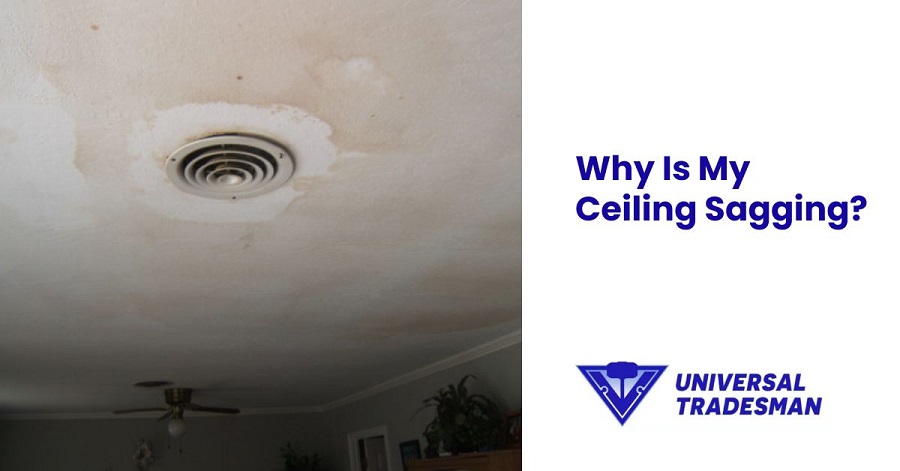https://universaltradesman.com.au/wp-content/cache/breeze-minification/js/breeze_336b4b067dcb50351d5e2d7c92cf1631.js
https://universaltradesman.com.au/wp-content/cache/breeze-minification/js/breeze_d8153fc720c10f3a7d79fecdfa9c9389.js
https://universaltradesman.com.au/wp-content/cache/breeze-minification/js/breeze_fc4da78be7a29e5956a167a997ede2e9.js
https://universaltradesman.com.au/wp-content/cache/breeze-minification/js/breeze_29a7ee3f1a11feb8ae88767a4c31f3de.js
https://universaltradesman.com.au/wp-content/cache/breeze-minification/js/breeze_ac47e84d56fe5a051ba20bc0bf2e7a53.js
https://universaltradesman.com.au/wp-content/cache/breeze-minification/js/breeze_91e598c0c596deac6c252eb6a4967154.js
https://universaltradesman.com.au/wp-content/cache/breeze-minification/js/breeze_15a8b90fad5c562062b299fad001022f.js
https://universaltradesman.com.au/wp-content/cache/breeze-minification/js/breeze_dbd9c0366077021a051496883cca1b40.js
https://universaltradesman.com.au/wp-content/cache/breeze-minification/js/breeze_c753f2f74b1ea54ee1b0d27c683d453d.js
https://universaltradesman.com.au/wp-content/cache/breeze-minification/js/breeze_0fea02c5bb1cbacdcde81a82a302cc17.js
https://universaltradesman.com.au/wp-content/cache/breeze-minification/js/breeze_7c770f496e649e4300f10a2b925bf400.js
https://universaltradesman.com.au/wp-content/cache/breeze-minification/js/breeze_69cabb9e424b6e4d599b16d802a3777d.js
https://universaltradesman.com.au/wp-content/cache/breeze-minification/js/breeze_0575cf220892f6cb38c23aac4ed40dba.js
https://universaltradesman.com.au/wp-content/cache/breeze-minification/js/breeze_5d0d0d314021d65a425c8fccec7611f3.js
https://universaltradesman.com.au/wp-content/cache/breeze-minification/js/breeze_bd56d0b2b70a101bced772c5642afde4.js
https://universaltradesman.com.au/wp-content/cache/breeze-minification/js/breeze_0df4319bcac769418a226913975a77fd.js
https://universaltradesman.com.au/wp-content/cache/breeze-minification/js/breeze_620a9e5eb0906de8d0cb92dfc3cc49b6.js
Why Is My Ceiling Sagging? 14 Apr, 2020, 1:27 AM Cracked, sagging ceilings can be very worrying, whether you’re a renter or a home owner. The sight of the very roof over your head starting to come down and in serious need of repair is enough make anyone question the integrity of their home. However ceiling sagging is a far more common issue than you might think. So, why is it happening to you, and what can you do about it?
Leaks, Excess Moisture and Water Damage This tends to be one of the more easily diagnosable issues that we see in a lot of sagging ceilings. Water damage, especially extreme water damage, is visible as it tends to discolour your ceiling and swells affected timber. It can also cause the growth of mould. The excess moisture fills your ceiling insulation, causing it to become water logged and weighing it down. This in turn causes the ceiling to sag, as the weight piles up more and more. This tends to be the most dangerous (and costly) form of sagging ceiling, as it is also indicative of further issues. Somewhere, something is causing a leak and it isn’t always obvious where the water is coming from. If left untreated, the water can continue to build until the weight becomes too much for the ceiling, causing it to collapse. This is incredibly dangerous for anyone in the vicinity during the collapse, and it can also damage your possessions.
To fix this, the cause of the leak must be discovered and addressed. The ceiling will need to be removed and any damaged timber will need to be replaced where necessary. Waterlogged insulation will also need to be removed and replaced. Then, a new ceiling will need to be fitted and painted. It’s a costly repair job. The sooner this is addressed, the better, as the alternative can be deadly.
Building Structural Movement and Age If your ceiling is cracked, there’s every chance that it’s been caused by structural movement in the building itself. This is actually completely normal, and buildings are designed in such a way that structurally they remain sound despite this. All materials expand and contract during different temperatures and weather conditions, and this can eventually cause cracking in your ceiling over time. Severe cracking may be indicative of a structural fault, or it could just be something that has occurred over time. Most times, this is nothing serious and repairs can be carried out easily.
This can also become more serious with the age of the building as the condition begins to deteriorate. Unaddressed problems can build up and become more problematic, so it is advised that you deal with any problems swiftly, before they become a major concern.
Excess Vibrations This is something we see a lot in garages with automatic doors. Repetitive excessive vibrations can run through roller door motors and affect the integrity of your ceiling. As with structural movement, it’s something that can happen over time, but many times is just a minor issue with no real structural damage. It’s best to get it checked out however, in case there is a real underlying problem.
So, do you think that your cracked or sagging ceiling could be caused by one of these issues? Contact us to organise an inspection, and we can help walk you through the process.
We are a small team of capable tradespeople who love what we do, and want to help you to make the most out of your home. Our home maintenance and repair services, waterproofing services, and renovations are second to none.
© 2024 Universal Tradesman - Renovation, Waterproofing and Property Maintenance Services in Melbourne
https://universaltradesman.com.au/wp-content/cache/breeze-minification/js/breeze_7d52867391b55a1c9e03c5bc75d80146.js
https://universaltradesman.com.au/wp-content/cache/breeze-minification/js/breeze_c0b6cbc23823f716b13cc681b59d89e5.js
https://universaltradesman.com.au/wp-content/cache/breeze-minification/js/breeze_8534cc9834a14901ad935879c9e83dc0.js
https://universaltradesman.com.au/wp-content/cache/breeze-minification/js/breeze_4b31429ca3c89257f2356f264541e9be.js
https://universaltradesman.com.au/wp-content/cache/breeze-minification/js/breeze_d4a0e4f35e858860601888612e34cb1f.js
https://universaltradesman.com.au/wp-content/cache/breeze-minification/js/breeze_df418e68f458f8e3e3ef81579f859575.js
https://universaltradesman.com.au/wp-content/cache/breeze-minification/js/breeze_0bc13bd493308c0a6694f79525f95510.js
https://universaltradesman.com.au/wp-content/cache/breeze-minification/js/breeze_b3ea4db86f20b6deae0486cf7102cf6a.js
https://universaltradesman.com.au/wp-content/cache/breeze-minification/js/breeze_24d21a711f2ee6a9b535f61be9f9f694.js
https://universaltradesman.com.au/wp-content/cache/breeze-minification/js/breeze_289fe955d564de064d0449d079bc2a91.js
https://universaltradesman.com.au/wp-content/cache/breeze-minification/js/breeze_e524ebb33ee9d19386a4824c19c4d818.js
https://universaltradesman.com.au/wp-content/cache/breeze-minification/js/breeze_29ba664a650940aa6b03e97922cc69b4.js
https://universaltradesman.com.au/wp-content/cache/breeze-minification/js/breeze_a0541a61bf659303bf75bab1e08b1ece.js
https://universaltradesman.com.au/wp-content/cache/breeze-minification/js/breeze_83ea3fc801b864c66a08f5cdf7ba290b.js
https://universaltradesman.com.au/wp-content/cache/breeze-minification/js/breeze_d6c8423d4b153125553962c82de0eb1c.js
https://universaltradesman.com.au/wp-content/cache/breeze-minification/js/breeze_5994fb4a9aa8f10172ec9096617b6287.js
https://universaltradesman.com.au/wp-content/cache/breeze-minification/js/breeze_a53a916adf48efefd5a2aa0861ebbc07.js
https://universaltradesman.com.au/wp-content/cache/breeze-minification/js/breeze_b4a09387199e096bfd99e02cb92a5906.js
https://universaltradesman.com.au/wp-content/cache/breeze-minification/js/breeze_83a062cf6545b990c13b4398035a29d0.js
https://universaltradesman.com.au/wp-content/cache/breeze-minification/js/breeze_69ee3c415bb1818446486b98dd4baa5a.js
https://universaltradesman.com.au/wp-content/cache/breeze-minification/js/breeze_0fd2ce7b4a9697154f40826618df90d8.js
https://universaltradesman.com.au/wp-content/cache/breeze-minification/js/breeze_b0504f021aa4e814c8a1f52e239770d3.js
https://universaltradesman.com.au/wp-content/cache/breeze-minification/js/breeze_fa415faca81fb06a2a117de7aa5f09ff.js
https://universaltradesman.com.au/wp-content/cache/breeze-minification/js/breeze_12d97f3dd764166fb1dccfb8d31c7d99.js
https://universaltradesman.com.au/wp-content/cache/breeze-minification/js/breeze_4466d94e5a0e38d3777cc7f97cdc7914.js
https://universaltradesman.com.au/wp-content/cache/breeze-minification/js/breeze_a53144a90e090c388ba411eb9ee51aa7.js
https://universaltradesman.com.au/wp-content/cache/breeze-minification/js/breeze_1ba2b11675eb04b54dbf267ff8fdb9d6.js
https://universaltradesman.com.au/wp-content/cache/breeze-minification/js/breeze_8c83e4c84df313f3eec89fdec716cb94.js
https://universaltradesman.com.au/wp-content/cache/breeze-minification/js/breeze_19f3a954f988bc2fec8e640b9fc4aef5.js
https://universaltradesman.com.au/wp-content/cache/breeze-minification/js/breeze_e4aefb6af2bb49810350e6a9fd3d01aa.js
https://universaltradesman.com.au/wp-content/cache/breeze-minification/js/breeze_affa9fc0b72738f4e70a7fd8bb16be36.js
https://universaltradesman.com.au/wp-content/cache/breeze-minification/js/breeze_c8d20eb4791bab1b92693040a2ace3d3.js
https://universaltradesman.com.au/wp-content/cache/breeze-minification/js/breeze_aea0140f10034244a2ee346dc1144480.js
https://universaltradesman.com.au/wp-content/cache/breeze-minification/js/breeze_e3026142011de796b74d7d3699096cf7.js
https://universaltradesman.com.au/wp-content/cache/breeze-minification/js/breeze_74d79a99ee9115538d4c6059e6cf6669.js
https://universaltradesman.com.au/wp-content/cache/breeze-minification/js/breeze_8c693339fda7760c1f4f04ce9cfe0b81.js
https://universaltradesman.com.au/wp-content/cache/breeze-minification/js/breeze_7eb51fed8fbf12bdf74afefc325a109d.js
https://universaltradesman.com.au/wp-content/cache/breeze-minification/js/breeze_6bb3f8ec3d995152d81df9639e92665e.js
https://universaltradesman.com.au/wp-content/cache/breeze-minification/js/breeze_cb335a007b865a488630ef30eda48f23.js
https://universaltradesman.com.au/wp-content/cache/breeze-minification/js/breeze_f1f6a12930dca9a502f9b6269816d020.js
https://universaltradesman.com.au/wp-content/cache/breeze-minification/js/breeze_c7297803da3c7cd7e20a4744111672e3.js
https://universaltradesman.com.au/wp-content/cache/breeze-minification/js/breeze_d3c93d8d014aacf34ba4ef7b9c976390.js
https://universaltradesman.com.au/wp-content/cache/breeze-minification/js/breeze_42f78adbdcf587d66d8f1137fd339579.js
https://universaltradesman.com.au/wp-content/cache/breeze-minification/js/breeze_efc077c39597374b12e1ebb5671441cc.js
https://universaltradesman.com.au/wp-content/cache/breeze-minification/js/breeze_691d0cdec8f35ac305346231a5729525.js
https://universaltradesman.com.au/wp-content/cache/breeze-minification/js/breeze_98c2861386f8e69f89770dfd3a395233.js
https://universaltradesman.com.au/wp-content/cache/breeze-minification/js/breeze_cce3cbd74400c322e0c7ecd4fa280586.js
https://universaltradesman.com.au/wp-content/cache/breeze-minification/js/breeze_36878700722ad5c1f9c12d4c1c543977.js
https://universaltradesman.com.au/wp-content/cache/breeze-minification/js/breeze_b097699d93313f95a12fe46e81ecb39d.js
https://universaltradesman.com.au/wp-content/cache/breeze-minification/js/breeze_c2ba54e4defa70960efcead6db5a5915.js
https://universaltradesman.com.au/wp-content/cache/breeze-minification/js/breeze_309313843c54af8468f675b1a7b7f08f.js
https://universaltradesman.com.au/wp-content/cache/breeze-minification/js/breeze_233e52831beccd7f8d71262e82baf918.js
https://universaltradesman.com.au/wp-content/cache/breeze-minification/js/breeze_53b7d534f5d44c2f81ecba06001a08d7.js
https://universaltradesman.com.au/wp-content/cache/breeze-minification/js/breeze_178f4d3163b38b06e6b4a00d28fbb566.js
https://universaltradesman.com.au/wp-content/cache/breeze-minification/js/breeze_4ee9882977e556ef2dd21c5b313daedf.js
https://universaltradesman.com.au/wp-content/cache/breeze-minification/js/breeze_50460f3fa1cb1306ccac1cc1dfb3429b.js
https://universaltradesman.com.au/wp-content/cache/breeze-minification/js/breeze_89b0b6af1629641f5c50761082fc36f7.js
https://universaltradesman.com.au/wp-content/cache/breeze-minification/js/breeze_f10b899a191b09c86666000754ed6521.js
https://universaltradesman.com.au/wp-content/cache/breeze-minification/js/breeze_bdc1e466fc436dc223abbd653674f2ad.js
https://universaltradesman.com.au/wp-content/cache/breeze-minification/js/breeze_4ce385a52d5194b7faaa69e42c45d59b.js
https://universaltradesman.com.au/wp-content/cache/breeze-minification/js/breeze_d362db0897dcd4f234bab878252648ae.js
https://universaltradesman.com.au/wp-content/cache/breeze-minification/js/breeze_3d8b11b06e7dc8084d25647b49c7e2dc.js
https://universaltradesman.com.au/wp-content/cache/breeze-minification/js/breeze_a2d0e181afffec03d2db05542ef80970.js
https://universaltradesman.com.au/wp-content/cache/breeze-minification/js/breeze_fb76bd42507abdb4d37bcc556bbf6bca.js
https://universaltradesman.com.au/wp-content/cache/breeze-minification/js/breeze_51aa6e8eb8c53d306a458d9bfa0883cd.js
https://universaltradesman.com.au/wp-content/cache/breeze-minification/js/breeze_452c316d594cb5b3130e5295d224754d.js
https://universaltradesman.com.au/wp-content/cache/breeze-minification/js/breeze_4e1eea3343d38c5377d200470401b392.js
https://universaltradesman.com.au/wp-content/cache/breeze-minification/js/breeze_32eebd049df2f836e758e968164ef6fe.js
https://universaltradesman.com.au/wp-content/cache/breeze-minification/js/breeze_9f1ae3692f2d60854a6116aac6eda1a8.js
https://universaltradesman.com.au/wp-content/cache/breeze-minification/js/breeze_da81d17da809a68f4d7dab3e8e0e1326.js
https://universaltradesman.com.au/wp-content/cache/breeze-minification/js/breeze_b4d79f65f25dc6a1dda7b1b6be335cbc.js
https://universaltradesman.com.au/wp-content/cache/breeze-minification/js/breeze_94d041d462db321cdb888066586f2068.js
https://universaltradesman.com.au/wp-content/cache/breeze-minification/js/breeze_2d29567d310c52f1bc7740203746e833.js
https://universaltradesman.com.au/wp-content/cache/breeze-minification/js/breeze_6c087aaba5bcb76bc96366600b854e20.js
https://universaltradesman.com.au/wp-content/cache/breeze-minification/js/breeze_7bc59a6f11c679fd9cbf6d80a96298c2.js
https://universaltradesman.com.au/wp-content/cache/breeze-minification/js/breeze_62fe89ad32c52b2cd9db03edcc663b9a.js
https://universaltradesman.com.au/wp-content/cache/breeze-minification/js/breeze_f5f875043fa4e624d12681f3c12679f7.js
https://universaltradesman.com.au/wp-content/cache/breeze-minification/js/breeze_17fd12aec67e57a50ecbcd42b008a0d5.js
https://universaltradesman.com.au/wp-content/cache/breeze-minification/js/breeze_88c080a98a98e03f93c380916472fa92.js
https://universaltradesman.com.au/wp-content/cache/breeze-minification/js/breeze_0efa337350b3eee23938a278a411ccfd.js
https://universaltradesman.com.au/wp-content/cache/breeze-minification/js/breeze_d2618ca90f702478ccb7c87f52772e17.js
https://universaltradesman.com.au/wp-content/cache/breeze-minification/js/breeze_221c587aadcfa2eb687261d186311101.js
https://universaltradesman.com.au/wp-content/cache/breeze-minification/js/breeze_24df248a172980fec3fc47ec5c599e1c.js
https://universaltradesman.com.au/wp-content/cache/breeze-minification/js/breeze_1d4cf29fb5e0d9ae026113e4a4c8c25b.js
https://universaltradesman.com.au/wp-content/cache/breeze-minification/js/breeze_791bd939d7d3b0181e6a64c05b9a0e47.js
https://universaltradesman.com.au/wp-content/cache/breeze-minification/js/breeze_610c36e183269c18a41c38e8b9fc920f.js
https://universaltradesman.com.au/wp-content/cache/breeze-minification/js/breeze_1652113dc5f53ab9bca3f6b3b8832502.js
https://universaltradesman.com.au/wp-content/cache/breeze-minification/js/breeze_ce634c6621026e8fb98418ce432c4b75.js

